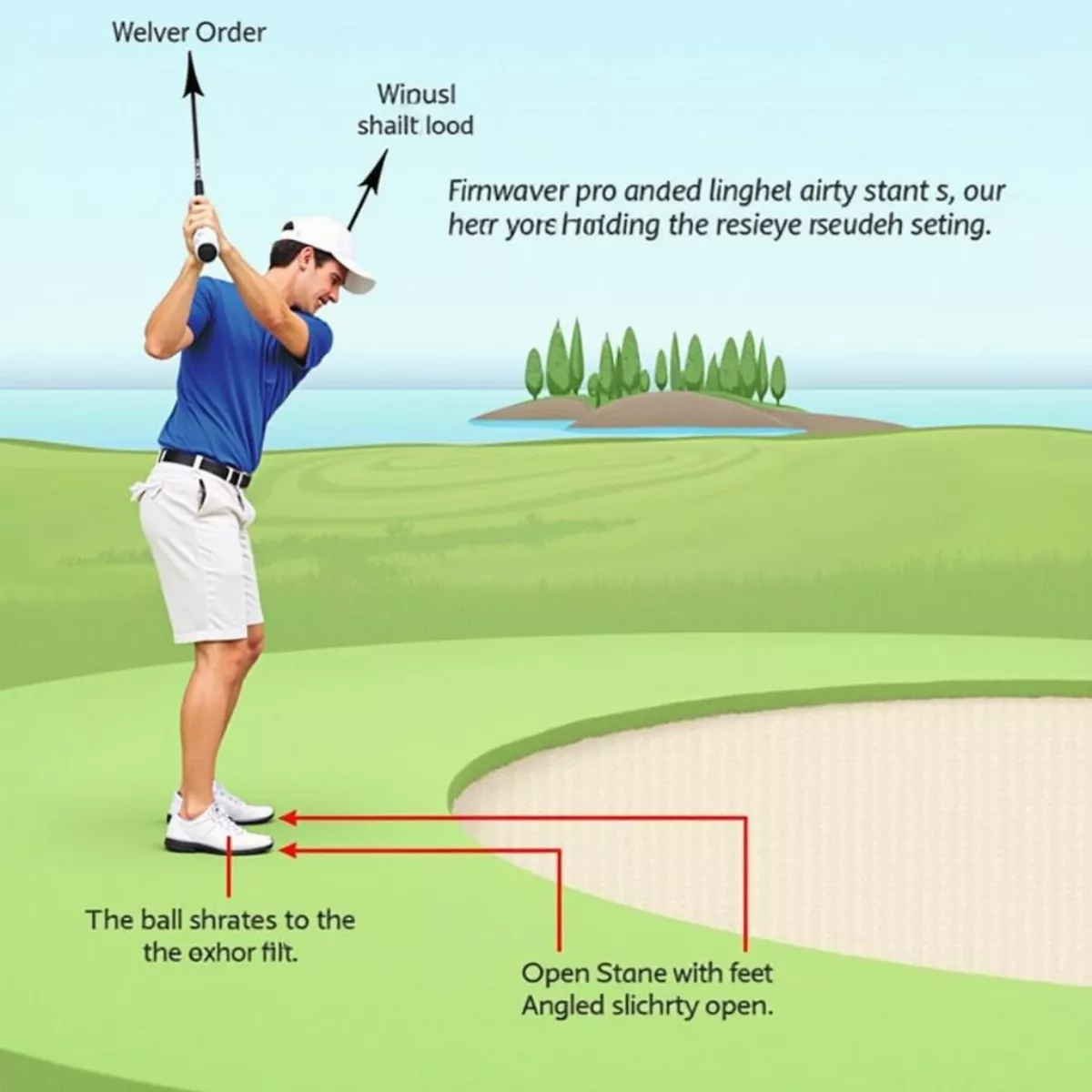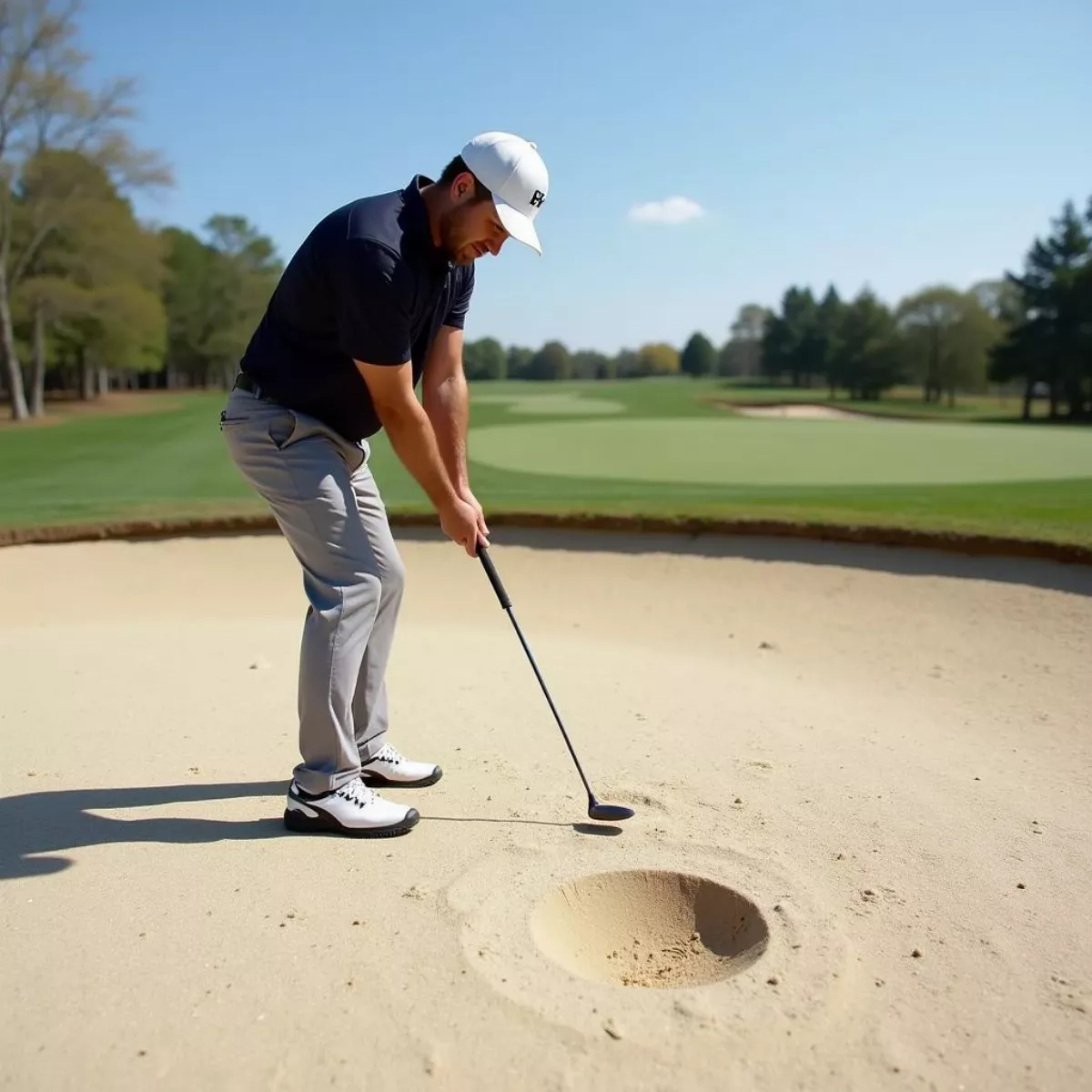Golf is a game of precision and finesse, and getting stuck in a bunker can be one of the most daunting challenges a golfer faces. However, understanding the techniques and strategies to exit those sand traps can transform your game from frustrating to fabulous! In this comprehensive guide, we will walk you through everything you need to know about getting out of a bunker like a pro. Whether you’re a beginner or a seasoned golfer, read on to improve your bunker play and lower your scores.
Understanding the Bunker
Before we jump into techniques, it’s essential to understand what a bunker is in golf. The bunker is a sand-filled trap designed to challenge players. It serves two purposes: it tests a player’s skill and keeps the game interesting.
- Types of Bunkers:
- Fairway Bunkers: Located near the fairway, typically not too deep.
- Green-side Bunkers: Positioned close to the green, often deeper and more challenging.
 Types of bunkers in Golf
Types of bunkers in Golf
Tools for Your Bunker Play
Selected gear can significantly improve your performance:
- Bunker Wedge: A club specifically designed for getting out of bunkers.
- Sandy Glove: This can help you grip the club better in a sandy environment.
- Ball Marker: To mark your ball position before entering the bunker.
1. Assess the Situation
First and foremost, assess the conditions:
- Ball Position: Is it buried, sitting up, or on the lip?
- Sand Quality: Is it fluffy, wet, or compact?
- Distance to the Flag: How far do you need to hit the ball?
Situational Awareness
These questions will guide your approach. You must use different techniques for each scenario:
| Situation | Recommended Technique |
|---|---|
| Buried Ball | Open the clubface and hit with a steep swing. |
| Ball Sitting Up | Take a normal swing with minimal clubface opening. |
| Ball Near the Lip | A delicate touch with an open clubface. |
2. Choose the Right Club
The right club can make all the difference. Here’s a quick breakdown:
- Sand Wedge (54-56 degrees): Ideal for most bunker shots; great for getting under the ball.
- Lob Wedge (58-60 degrees): Useful for short, high shots; perfect for green-side bunkers.
- Gap Wedge (50-52 degrees): Sometimes effective in fairway bunkers when you need more distance.
 Golf club wedges: sand, lob and gap wedges.
Golf club wedges: sand, lob and gap wedges.
Selecting Your Club
Choose your club based on the distance you need to travel and your comfort level:
- For short shots: Sand or lob wedge.
- For longer shots: Consider using a gap wedge.
3. Master Your Setup
Getting into the correct setup is crucial:
- Stance Width: Stand with a slightly wider stance than normal.
- Ball Position: Place the ball slightly forward in your stance.
- Weight Distribution: Favor your lead foot (left foot for right-handed golfers).
- Open Stance: Angle your feet slightly to the left (for right-handers) to align your shoulders.
Body Alignment
Here’s a simple checklist for your setup:
- Feet anchored in the sand
- Knees slightly flexed
- Hands ahead of the ball
 Correct setup for a bunker shot
Correct setup for a bunker shot
4. Perfecting Your Swing
The Swing Mechanics
To effectively escape a bunker, focus on the following:
- Clubface Angle: Open it to allow for better lift.
- Swing Path: Follow through with an exaggerated upward motion to avoid hitting the ball directly.
- Follow through: Keep your head down and maintain your balance.
Practice Your Swing
- Visualize the shot: Picture the desired trajectory.
- Practice with purpose: Use drills focusing on sand shots to build confidence.
Drills to Boost Your Skills
- Footprint Drill: Practice leaving your footprint while hitting sand to improve your angle.
- Half Swing Drill: Focus on feeling the right impact to avoid over-hitting.
5. Mental Game
Your mind plays a crucial role in your performance. Here’s how to keep it in check:
- Stay Positive: Focus on what you can control and visualize success.
- Breathe: Take deep breaths to maintain calm and clarity.
- Stay Committed: Trust your instincts and commit to your shot.
 Golfer practicing the footprint drill in a bunker
Golfer practicing the footprint drill in a bunker
6. Common Mistakes to Avoid
Identifying typical pitfalls can help you improve faster:
- Hitting Too Hard: Resist the urge to muscle the shot; you’ll likely make more mistakes.
- Incorrect Club Selection: Always assess your distance and angle before choosing a club.
- Poor Setup: A bad stance can lead to a subpar shot.
Key Takeaways
- Assess before acting: Understanding the bunker conditions is key.
- Choose the right club: Use a sand or lob wedge for optimal performance.
- Master your setup: Ensure a proper stance for better swings.
- Focus on swing mechanics: Open the clubface and follow through smoothly.
- Maintain a positive mental attitude: Visualize success and remain calm.
FAQ Section
1. What is the best club to use in a bunker?
The best club to use is typically a sand wedge or lob wedge, depending on the distance you need to travel.
2. How do I prevent my ball from getting stuck in the sand?
To avoid the ball getting stuck, ensure the clubface is open and focus on making solid, controlled contact with the sand about two inches behind the ball.
3. Can I use a regular iron for bunker shots?
Generally, a sand wedge is more effective due to its design, but you can use a gap wedge if you’re in a fairway bunker, provided the distance and situation permit it.
4. How do I practice bunker shots at home?
Practice hitting into a bucket filled with sand, using a similar swing to what you’d use on the course.
5. How can I improve my bunker play?
Regular practice, focusing on your setup, and understanding swing mechanics will continuously enhance your bunker skills.
6. Is it legal to touch the sand in a bunker before hitting?
Yes, but only with your club. Touching it with your hand is illegal and incurs a penalty.
7. What should I do if the sand is very hard?
In harder sand, you may need to make more of a precision shot with a steeper angle while utilizing less clubface opening.
8. How can I get more lift on my bunker shots?
Open your stance and clubface while making a sweeping motion; this will help get the ball airborne.
9. Should I practice bunker shots regularly?
Yes, regular practice in bunkers will greatly improve your comfort and skill in sand play.
10. What is the “footprint drill”?
The footprint drill involves practicing your swing in the sand to ensure you’re making proper contact without changing your setup.
 Golfer celebrates successful bunker shot
Golfer celebrates successful bunker shot
Continue practicing these techniques, and soon, you’ll find yourself navigating bunkers with ease. Remember, practice makes perfect, and understanding the nuances of bunker play is crucial to your golf success. Happy golfing!
